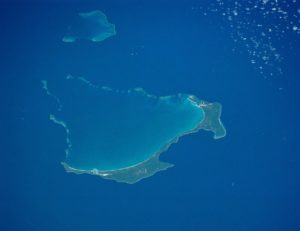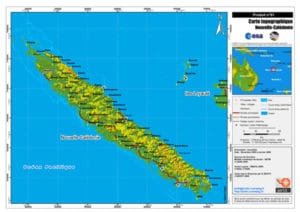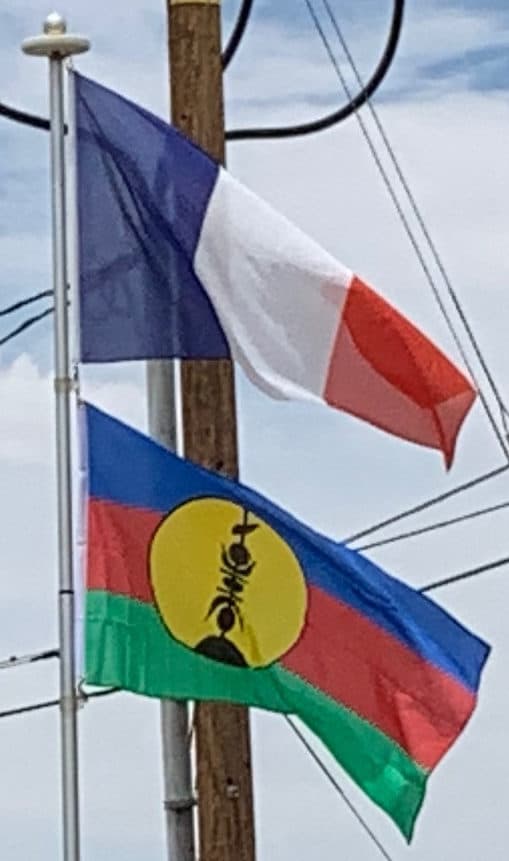The European and Polynesian populations gradually increased in the years leading to the nickel boom of 1969–1972, and the indigenous Kanak Melanesians became a minority, though they were still the largest ethnic group.
Between 1976 and 1988, conflicts between French government actions and the Kanak independence movement saw periods of serious violence and disorder. In 1983, a statute of “enlarged autonomy” for the territory proposed a five-year transition period and a referendum in 1989. In March 1984, the Kanak resistance, Front Indépendantiste, seized farms and the Kanak and Socialist National Liberation Front (FLNKS) formed a provisional government. In January 1985, the French Socialist government offered sovereignty to the Kanaks and legal protection for European settlers. The plan faltered as violence escalated. The government declared a state of emergency; however, regional elections went ahead, and the FLNKS won control of three out of four provinces. The centre-right government elected in France in March 1986 began eroding the arrangements established under the Socialists, redistributing lands mostly without consideration of native land claims, resulting in over two-thirds going to Europeans and less than a third to the Kanaks. By the end of 1987, roadblocks, gun battles and the destruction of property culminated in the Ouvéa cave hostage taking, a dramatic hostage crisis on the eve of the presidential elections in France. Pro-independence militants on Ouvéa killed four gendarmes and took 27 hostage. The military response resulted in nineteen Kanak deaths and another three deaths in custody.

The Matignon Agreements, signed on 26 June 1988, ensured a decade of stability. The Nouméa Accord signed 5 May 1998, set the groundwork for a 20-year transition that gradually transfers competences to the local government.
Following the timeline set by the Nouméa Accord that stated a vote must take place by the end of 2018, the groundwork was laid for a referendum on full independence from France at a meeting chaired by the French Prime Minister Édouard Philippe on 2 November 2017, to be held by November 2018. Voter list eligibility had been a subject of a long dispute, but the details have since been resolved. On 20 March 2018, the government announced a referendum that was held on 4 November 2018, with independence being rejected.
Geography:
New Caledonia is part of Zealandia, a fragment of the ancient Gondwana super-continent. It is speculated that New Caledonia separated from Australia roughly 66 million years ago, subsequently drifting in a north-easterly direction, reaching its present position about 50 million years ago.
The mainland is divided in length by a central mountain range whose highest peaks are Mont Panié (1,629 m or 5,344 ft) in the north and Mont Humboldt (1,618 m or 5,308 ft) in the southeast. The east coast is covered by a lush vegetation. The west coast, with its large savannahs and plains suitable for farming, is a drier area. Many ore-rich massifs are found along this coast.

The Diahot River is the longest river of New Caledonia, flowing for some 100 kilometres (62 mi). It has a catchment area of 620 km2 (240 sq mi) and opens north-westward into the Baie d’Harcourt, flowing towards the northern point of the island along the western escarpment of the Mount Panié. Most of the island is covered by wet evergreen forests, while savannahs dominate the lower elevations. The New Caledonian lagoon, with a total area of 24,000 square kilometres (9,300 sq mi) is one of the largest lagoons in the world. It is surrounded by the New Caledonia Barrier Reef.
Economy:
New Caledonia has one of the largest economies in the South Pacific, with a GDP of US$9.89 billion in 2011. The nominal GDP per capita was US$38,921 (at market exchange rates) in 2011. It is higher than New Zealand’s, though there is significant inequality in income distribution, and long-standing structural imbalances between the economically dominant South Province and the less developed North Province and Loyalty Islands. The currency in use in New Caledonia is the CFP franc, pegged to the euro at a rate of 1,000 CFP to 8.38 euros. It is issued by the Institut d’Émission d’Outre-Mer.
